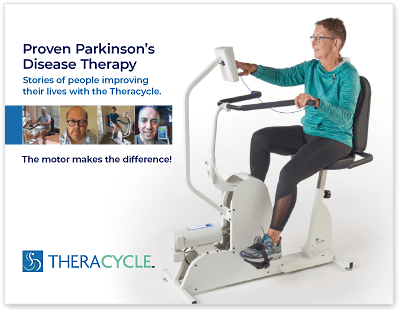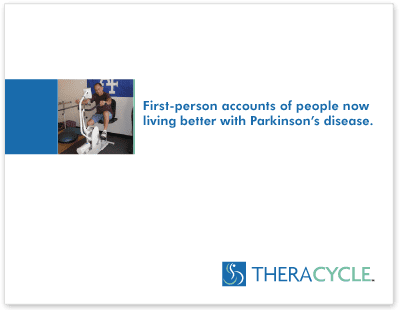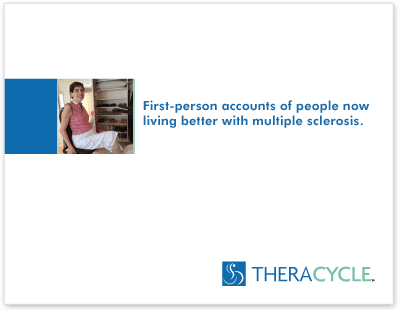Stories
Exercise for Parkinson’s Disease: The Comprehensive Health Benefits
· By Emma Yasinski | Parkinson’s News Today, originally published on 11/27/18 ·
With a treatment not yet within reach that might slow the progression of Parkinson’s disease, much less offer a cure, many – doctors, patients, and researchers alike – are looking to exercise in hopes of fending off a worsening of symptoms.
Interest in exercise-based interventions has risen so much that “the number of publications on exercise studies has increased by a factor of 10 since 2000,” Tanya Simuni, MD, chief of Movement Disorders in the Department of Neurology at Northwestern University, said in a 2016 interview on the International Parkinson and Movement Disorder Society website.
Many consider it common sense that exercise can help to compensate for the motor symptoms that mark Parkinson’s – and research points to this possibility – yet scientists still have few clues as to how exactly it does so.
Work done through the Parkinson’s Outcome Project, an ongoing study involving more than 12,000 patients in five countries, suggests that patients should exercise at least 2.5 hours each week to slow decline and maintain a better quality of life. A similar study advised that patients should begin regular exercise at diagnosis.
Still, this research stops short of recommending a specific exercise regimen as a best strategy.
This has led several enterprises – both for-profit companies and nonprofit groups – to offer classes ranging from dancing to Parkinson’s-only boxing, and products such as specialized at-home exercise equipment that promise to reduce, reverse, and delay symptoms.
While the literature on exercise in Parkinson’s is “extensive,” Rebecca Gilbert, MD, PhD, chief scientific officer of the American Parkinson’s Disease Association and a practicing neurologist, told Parkinson’s News Today, studies on its effects are typically small. Only recently have they begun to grow in size and in quality – but “translating [their findings] into practical recommendations” is a challenge.
Exercise and the brain
In Parkinson’s, neurons in a brain area called the substantia nigra that are responsible for producing a neurotransmitter called dopamine gradually die off, leading to motor symptoms such as tremor and bradykinesia (slow movement).
Levodopa – which works to increase dopamine levels in the brain but cannot rescue damaged neurons – is currently the front-line treatment for the disease.
Some evidence suggests that, like levodopa, exercise may exert some of its effects by increasing dopamine. A recent study of 17 Parkinson’s patients used positron emission tomography (PET) scans of the brain before and after stationary cycling. Results showed that habitual exercisers in this group – eight patients who exercised more than three hours a week – had higher dopamine levels in the dorsal striatum (the brain area that receives dopamine input from the substantia nigra to help control movement) after stationary cycling than the nine others who were sedentary.
The eight exercisers also performed better on functional tests assessing motor symptoms, including the Unified Parkinson’s Disease Rating Scale (UPDRS) part 3 – which measures items such as gait and time to stand – and in tests of non-motor symptoms such as apathy and depression.
Exercise might also go a step further than levodopa by increasing brain-derived-neurotrophic-factor (BDNF), which promotes the survival of neurons that make dopamine – the same neurons that degenerate in Parkinson’s patients.
An analysis of 12 studies of BDNF levels in Parkinson’s patients found lower levels of BDNF in patients’ serum than in healthy individuals (mean difference of 2.99 ng/mL).
Two of these studies showed that patients who completed exercise programs lasting four, eight, or 12 weeks increased both serum levels of BDNF and UPDRS motor scores.
A separate review of 32 studies related to exercise’s effects on BDNF suggested that aerobic exercise increased BDNF serum levels in healthy people. This was seen to be both an acute effect of a single exercise session and a result of consistent exercise. Strength training did not impact BDNF.
Another Phase 2 study (NCT01506479) divided 128 recently diagnosed patients into three groups that either continued not exercising, participated in 30 minutes of gentle treadmill walking four times a week, or were assigned to six months of high-intensity treadmill exercises for 30 minutes four times a week. Those who did the high-intensity workout maintained the same UPDRS motor score at the study’s end as they had at its start, while those in group that did not exercise saw their scores drop by three points, and those who exercised minimally had a two-point drop.
Rock Steady Boxing
Rock Steady Boxing, a nonprofit, non-combat boxing program designed exclusively for Parkinson’s patients, aims to help all – regardless of skill level – take advantage of the benefits of exercise, while building a supportive and understanding community of patients.
Parkinson’s News Today columnist Jean Mellano, an athlete who not only boxes with Rock Steady but also does physical therapy, yoga, weight training, and daily walking to help treat her Parkinson’s, said “the camaraderie is off the charts.”
Joyce Johnson, Rock Steady’s executive director echoed that sentiment, noting “the magic of Rock Steady is the camaraderie and the fact that all of our boxers are fighting back against same disease.”
Founded in 2006, Rock Steady Boxing has grown in popularity and now operates out of more than 700 locations worldwide.
“We’ve actually had neurologists write Rock Steady Boxing on their little prescription pad and sent them to a location,” Johnson said.
Rock Steady allows affiliates to operate for a small fee in boxing gyms, YMCAs, hospitals, and churches. Some programs are free to patients thanks to grants, but most require participants to pay fees similar to that of an average exercise program.
A typical 90-minute class begins with a warm-up, followed by varied exercises designed to mitigate Parkinson’s symptoms through balance and flexibility work, jumping rope, weightlifting, and, of course, boxing.
A case study, listed on the group’s website and published in the journal Physical Therapy, of six Rock Steady boxers showed that after 24–36 classes over the course of 12 weeks, all six boxers improved in at least five out of 12 outcome measures, such as the Functional Reach Test, gait speed, cadence, stride length, step width, and other measures of UPDRS part 3, as well as the Parkinson Disease Quality of Life Scale, an assessment of non-motor symptoms. Patients in earlier disease stages did better at 12 weeks, but those with more advanced disease gained benefits with regular classes that ran for 24 and 36 weeks.
Stephanie Combs-Miller, PhD, the case series’ lead author and an associate professor at the Krannert School of Physical Therapy at the University of Indianapolis, published a slightly larger study in 2013 comparing Rock Steady Boxing with a community-based exercise program that included stretching, resistance, aerobic, and balance-based exercises in 31 patients.
Patients again took part in 24-36 sessions of either workout over the course of 12 weeks. The researchers expected that both programs would lead to improvements, but that the boxers’ improvements would be more dramatic than those of patients in the traditional exercise program.
However, Combs-Miller and her team concluded that “both groups demonstrated significant improvements with the balance, mobility, and quality of life,” supporting the idea that any group-based exercise can help Parkinson’s patients, provided they do it consistently.
Still, as Johnson put it: “How much more fun is that for a grandpa to tell his grandkids that he’s going to boxing instead of saying he’s going to therapy?”
Theracycle and forced exercise
Rock Steady boxers are encouraged by coaches and peers to attempt moves and workout intensities that seem to push the limits of their abilities.
The Theracycle takes this idea a step further, using a motor that forces patients to pedal the stationary bike faster than they could on their own, theoretically maximizing workout effects.
Jay Alberts, PhD, a biomedical engineer at the Cleveland Clinic and an avid cyclist, went on a 200-mile trip in 2003 on a tandem bike with a friend, who also happened to be a Parkinson’s patient. The friend was forced to pedal at Alberts’ pace, which was about 30 revolutions per minute faster than she would have been able to pedal on her own. According to Alberts, her tremors disappeared during the ride and for a period of time afterward.
Alberts brought another patient on his tandem bike and noticed similarly striking results.
But requiring a strong cyclist to take patients out on tandem bike rides regularly is not a practical treatment plan for 10 million patients worldwide.
The Theracycle, a motorized stationary bicycle based on the exercycle invented in 1932, gives patients a safe way to engage in forced exercise – exercise where, in this case, a motor helps them pedal at a speed they wouldn’t be able to reach on their own – at home without a tandem bike or partner.
Alberts conducted a small study in 2009 at the Cleveland Clinic, which appears on the Theracycle website and was published in the journal Neurorehabilitation and Neural Repair, comparing the effects of forced exercise and voluntary exercise (in which patients choose the intensity at which they exercise) on Parkinson’s symptoms.
Ten patients were randomly assigned to complete three one-hour sessions per week of either voluntary cycling or forced exercise using a motorized cycle. After eight weeks, both groups showed improved aerobic capacity, but only the forced exercise group showed improvements (an average of 35%) on the UPDRS part 3.
Mike Studer, president and co-owner of Northwest Rehabilitation Associates, has been using the Theracycle in his Oregon physical therapy clinic since the company reached out to him more than eight years ago, shortly after the Cleveland Clinic study was published. He said he “remained skeptical” of the new research at first, but that the Theracycle “meets and exceeds” expectations.
His clinic also offers the Rock Steady Boxing program, yoga, treadmills, underwater exercises, and more. Studer says “a repetition is not equal to every other repetition.” With the Theracycle, he can control the intensity of a patient’s workout, a crucial factor in its effectiveness.
The main drawback of the machine is its price. It’s not covered by Medicare, and Rich Blumenthal, chief operating officer of Theracycle, admits that the $3,700–$5,900 price tag (depending on the model) can make the equipment difficult to sell. But patients’ lives “are just better when they start using this,” he says.
Both regimens have one thing in common – pushing patients to do more than they may think they are capable of doing.
“There is nothing wrong with people’s bodies. What’s wrong is that neurologically they quit producing dopamine,” Johnson said.
Whether they are encouraged by coaches or by motors, patients often end up doing more than they ever thought they could.
We may never know which exercise regimen is the most effective for preventing Parkinson’s decline, or which is better for any given patients.
“It’s virtually impossible to imagine testing every single modality versus every other modality,” Gilbert said, but “the answer is it’s probably a little of everything.”








